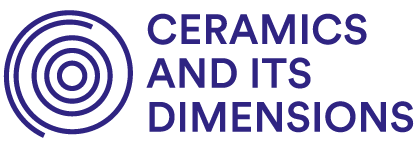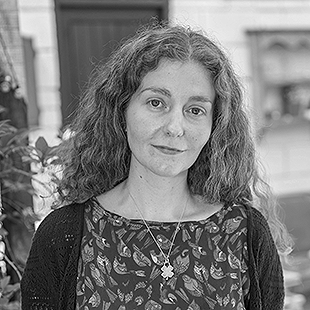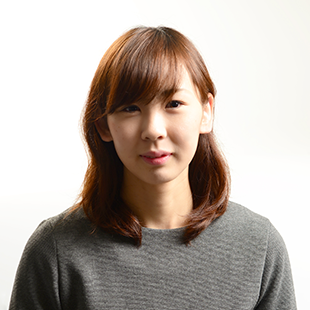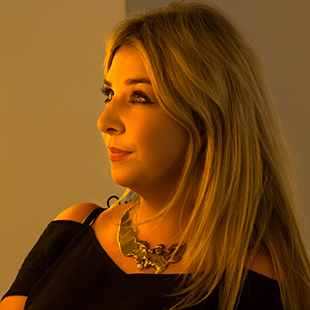

An important objective of the project is to raise awareness of young people taking into account the new generation of artists, designers, stakeholders, architects dealing with ceramics. The part Future Lights in Ceramics aims to provide profound knowledge on ceramics to young people through contact and discussion with experts. Together with the European Ceramic Society (ECerS), federation of European national ceramic societies, an exchange of artistic and creative skills and knowledge about technology and material science is intended. The transfer of knowledge will drive new aspirations. The group of young people, the Future Lights in Ceramics, coming from the world of research, design, architecture, industry, will exchange their qualifications and expose their ideas to extend and improve innovation of technical ceramics.
The aim of the Young Ambassador Programme is to establish an international network with all young actors dealing with ceramics to exchange their ideas about the material and its perspective considering new consumers tendencies and new challenges such as integration and sustainable development. They will expose the results of their reflection through presentations at relevant events. Young Ambassadors will develop a meaningful and on-going relationship which will be an international guideline to encourage research and innovation in all the fields of ceramics. The first Future Lights were awared during a competition at Staffordshire University in October 2015.
Ceramics have always played a prominent role in the life of people in every European country. Its products were items used on daily basis for decoration or representation; they were and are still present in private homes as well as public areas in towns and villages. Ceramics in Europe have been shaped by the strong interdependency in Europe’s cultural region, techniques and colours, as well as by being used in a historical-cultural context such as for eating and drinking, decoration or architecture. Ceramics connect people, but they also enable regional differences, such as traditions, life-styles, and social or economic behaviours to be expressed and therefore develop an individual identity. Thanks to its characteristics and design possibilities, ceramics play an outstanding role in the lives of people and will continue to do so.
The past few decades have changed both Europe and the world presenting new social and economic challenges. Over the course of globalisation, our lifestyles have changed and are now closer to each other than ever before. There is a real cultural interchange which is also giving an impact on the design of European ceramics.
This ambitious project will connect museums, architects, designers, industry, and stakeholders from different European countries to explore the material according to its cultural, historical, technical, and artistic aspects. The course of the project will be punctuated by a series of events: exhibitions, workshops, symposia in all partner countries to encourage knowledge in the field of ceramics and to develop an inter-cultural dialogue between European ceramics regions.
The project intends to analyse the evolution and the different ways of use of ceramics from the baroque period to the present time. It places a lot of importance in discovering the future by studying the evolution of ceramics according to new challenges such as consumer’s needs, sustainable development and integration of minorities. Potential of new technologies will be explored to enable communication and access for numerous groups.

Kate has taken part in exhibitions including this year's British Ceramics Biennial Fresh Awards and the International Ceramic Triennial UNICUM, Slovenia in 2012.
Statement
I am interested in exploring ways in which poetic structures can function visually, by balancing and manipulating material qualities and connotations, whilst employing a ‘Thinking through Making’ approach.
I utilise a range of processes and techniques to create works which play with ambiguity and speak about the human condition. A combination of porcelain and textile helps to establish a dialogue between material and form. Differences are accentuated as each material imparts something to the other and specific qualities are intensified when viewed in relation to contrasting physical traits.
Objects relating to ritual, ceremony and adornment are referenced to create a heightened physical awareness of the body and material. Initially this is communicated through an immediate, intuitive, tactile language but a closer reading of these works will evoke further associations linked to experiences bound by time, sequencing and memory.
The assemblages are uncanny in nature and have no definite cultural or historical origin. They prompt us to question our relationship with objects, how they allow us to form and trigger memories and act as anchoring points in our lives by connecting us to the world.
Contact: www.katehaywood.co.uk
Volta, 170 x 16 x 4 cm (HWD), 2014, porcelain, wool and cotton, wheel thrown and modelled, 1280 °C
Hora, 63 x 21 x 3.5 cm (HWD), 2015, porcelain, leather, brass, wool and cotton, wheel thrown and modelled, 1280 °C
Pavane, 160 x 21 x 14 cm (HWD), 2014, porcelain, wool and cotton, wheel thrown and modelled, 1280 °C
Gavotte, 64 x 46 x 3 cm (HWD), 2014, porcelain, wool, cotton, silk, gold leaf, wheel thrown and modelled, 1280 °C
Tinku, 170 x 16 x 4 cm (HWD), 2014, porcelain, ceramic stain, wool and cotton, wheel thrown and modelled, 1280 °C

Yuka has recently exhibited as part of Ceramics in the City, at the Geffrye Museum London and Innovations in Ceramic Art at the Guildhall, Cambridge. Since 2013 she works with Reiko Kaneko (Reiko Kaneko Design Ltd.).
Statement
As a designer and creator of functional ceramic tableware products, my influence and inspiration comes from a rich cultural background from Japan. I have created stunning contemporary ceramic designs by using slipcast techniques to create amazing functional tableware and pushing the boundaries of everyday kitchenware. The motives of my works are inspired by the natural world such as mountain, sky, and culture. My ceramics combine processes and techniques from craft and industrial ceramic design. My design concept can be characterised by its functionality combined with a surprising bonus feature. I consider that most vessels need to have more than one useful and simple function with the exception of a container. All my works are concentrated on how people actually use objects. My ambition is to make indispensable and enriching objects for people's lives. With my own body of work and my acquired knowledge of ceramics I am going to be a famous artist.
Contact: www.yukakikumoto.com
Volcanic Lamp, 13 x 21.7 cm (HW), 2014, parian, slip-casting, 1220 °C
Moon Landing, 9 x 23 cm (HW), 2013, earthenware, slip-casting, 1100 °C
Sakura cup, 6 x 9 cm (HW), 2015, earthenware, slip-casting, 1200 °C
Wagasa Small Bowl, 3.2 x 12 cm (HW), 2015, bone china, slip-casting, 1240 °C
Mochi Tea Set, 15.5 x 19 x 12.3 cm (HWD), 2016, porcelain, slip-casting, 1240 °C

Beth has shown her work at various exhibitions and events including the London Design Festival and at Handmade at Kew. In 2014 she had won the ‘Tap Design Award’ and was nominated by Simon Fraser for the Perrier-Jouët Arts Salon Price in 2015. Currently she is being sponsored by the National Association of Decorative & Fine Arts Societies (NADFAS), which is providing a residency at Cockpit Arts.
Statement
I work between the worlds of art, design, craft and technology to create innovative and thought provoking porcelain lighting.
My porcelain lighting exploits the traditional and mysterious technique of lithophanes. The lights are realised using 3D printing technologies, hand carving, the latest LED and lighting controls.
I explore, within this medium, urban scenes contrasting current social, environmental, and aesthetic scenes with those of the romantic landscapes featured on 19th Century industrially produced domestic ceramics.
Lithophanes were a 19th Century passion and were used with an internal light source diffusing through the porcelain creating a gentle play of shadows exposing beautiful delicate and sculptural images. The widespread emergence of printed landscape patterns on industrial ceramics was driven by the fashion for Chinese and Japanese porcelain decorated with idyllic and picturesque landscapes. It was in effect a rural nostalgia, the result of a confluence of technological development and urbanisation. My work examines our intense urban landscapes though the elegiac atmosphere lithophanes create.
Contact: http://bethlewiswilliams.com
London Skyline
The Cross
The Hunters
Whitby Seaside
Bears in the Woods

Kristina’s most recent exhibition was solo exhibition Embrio in Stekleni atrij Mestne hiše, Ljubljana, Slovenia.
Statement
My work is a mirror, which narrates personal story while breaking constructs of traditional mediums. Finding and building relations between the individual and artwork is a driving force when creating. I constantly search for unconscious forms when interpreting my surroundings. Abstract forms are born from reinterpreting realistic ones and with ambiguity they tell universal stories, which are dependent on one’s personal narrative. With spontaneity and dynamism, the forms range from dream-like to erotic shapes and give the individual the power and the freedom, to create a personal experience through associations and fantasies. They are often delivered from interpreting human figure. I tend to question and challenge printmaking and ceramics as mediums. I am intrigued by finding uniqueness in processes that are traditionally used to create multiples. When breaking the rules of the used medium, I try to turn objects into artefacts and reactivate the mediums characteristics. When using the potter’s wheel in ceramics, I alter these forms and break their functionality to reinterpret them into a sculpture. In printmaking, I focus on creating monoprints by combining different matrixes as well as changing the color and paper, creating individually unique prints. With installing the pieces, the viewer is challenged to physically interact with the whole space.
Contact: www.kristinarutar.com
Embrio II., 32 x 16 x 11 cm (HWD), 2015, wheel-thrown and altered stoneware, electric kiln
Embrio III., 39 x 21 x 29 cm (HWD), 2015, wheel-thrown and altered stoneware, electric kiln
Embrio IV., 28 x 20 x 16 cm (HWD), 2015, wheel-thrown and altered stoneware, electric kiln
Embrio IX., 42 x 23 x 30 cm (HWD), 2015, wheel-thrown and altered stoneware, electric kiln
Embrio XI., 30 x 19 x 18 cm (HWD), 2015, wheel-thrown and altered stoneware, electric kiln

Francesca has exhibited in Italy and the UK including Design on the Coast, Cetara, in Salerno and London Pride, at Valentines Mansion.
Statement
Constantly dedicating myself to the studio practice in ceramic workshops, in 2010 I started my own production of ceramics, a unique range of tableware which reflects my passion, style and culture for creating different pieces inspired by historical or forgotten objects and turned into contemporary themes.
From the old tradition and local ceramic production of the South of Italy to the Industrial and commercial approach of pottery factories in the North of England, the collection of ceramics I made translates and melts different cultures and knowledges, trying to achieve the right balance between craft or handmade practice and modern innovations in the contemporary market. The main research, in fact, is focused on how a production of ceramic objects, nowadays, can preserve connections with the past and can involve the meeting of different cultures, resolving in simple shapes and functional forms several aspects of the modern social lifestyle, enjoying people and revealing in their use new kinds of interactions and emotions.
My ceramics can be placed in the middle of the unsolved dilemma: industrial or handmade?... unique or serial? Thanks to all my different working experiences, I try to mix different things in order to reinvent them, improving the artistic potential in everyday objects to design potteries with elegant forms and a touch of humour, always leaving a light craft touch on their visual appearance....I enjoy designing, because I love making and I would like to communicate that through my products
Contact: www.romceramics.com
Birds Coffee Cups, 6 x 4 cm (HW), porcelain, transparent glaze
Rings Happy Hour Set, 7.5 x 9.5 cm (HD tall one), coloured earthenware 3 layers, transparent glaze
Dolly Vase and Lid, 13 cm (H), bone china, transparent glaze
Metal Memories Glasses, 7 x 5.5 cm (HD), bone china, transparent glaze

Emily’s most recent exhibitions include the Kunstlerhaus Stadttopfererei Neumunster, Germany and Rising Stars, New Ashgate Gallery, Farnham, UK.
Statement
I am interested in the pursuit of beauty, in the creation of objects and environments with a sense of narrative and play, and actively engaging with viewers to stir memories, emotion and new perceptions of objects and places. Often my work responds to specific locations and the journeys within those spaces. The relationship that is created between object and place really interests and excites me. My work is rooted in drawing, as a way of gaining inspiration, developing and refining objects, and as an entity in itself. This interplay between 2D and 3D often creates interesting and surprising results, with the two actions being inextricably linked. Whilst drawing I love to explore mark making as well as directly representing my surroundings. Through combining these two styles and incorporating clay I create layered and visually rich work. The japanese aesthetic of Wabi Sabi also underpins much of my work, through the importance and appreciation for subtlety, spontaneity, imperfection, irregularity and inspiration from nature. Often the work I make is rather small in scale, acting to draw the viewer in, as one must move close to the work in order to discover its intricacies.
Statement about the work I’m showing at Ambiente:
This collection of vessels is inspired by drawings of my Grandmother’s kitchen shelves and drawers - spaces containing jars, bowls and spoons, jumbles of objects in intriguing shapes and sizes that raise questions of purpose and history. I am inspired to look at everyday objects and reinterpret them in new ways so stimulating people to see the beauty in the mundane.
Contact: www.emilystapletonjefferis.co.uk
Vessels, 2015, porcelain, salt and soda glazed to 1300 °C and vaporized with stannous chloride at 700 °C
Vessels inspired by the work of Margaret Gardiner, Autumn 2015, porcelain, salt and soda glazed to 1300 °C and vaporized with stannous chloride at 700 °C
Vessels inspired by the work of Margaret Gardiner, Autumn 2015, porcelain, salt and soda glazed to 1300 °C and vaporized with stannous chloride at 700 °C
Spoons inspired by my Grandmother’s spoon draw, 2015, porcelain, twigs, metal, high fired to 1260 °C and raku fired to 800 °C
Spoons inspired by my Grandmother’s spoon draw, 2015, porcelain, twigs, metal, high fired to 1260 °C and raku fired to 800 °C

Atis most recent exhibitions include European Ceramic Context 2014 at Bornholm Museum in Denmark, and the 4th International Ceramic Tile Competition at the University of Ushak, Turkey.
Statement
My creative manifestations are trying to combine many thematic levels both in visual appearance as well as the conceptual part, and also even seemingly minor work supplementing with it own unique function, particularly with the light. I believe that fundamental importance is that all things are interconnected and it is the major aspect for my creative vision. Often my work combines theological concepts, mathematics, psychology, philosophy, and sometimes even mysticism.
Contact: http://schnep.wix.com/b
Microphones Anger, porcelain, slip-casting, electric kiln, 1280 °C
Light Installation Spirit 2.0, porcelain, slip-casting, electric kiln, 1280 °C, steel (welding), lightning system
Teapot Blue Horse, stoneware, hand building, wood kiln, 1300 °C
Teapot Sea Horses, stoneware, hand building, electric kiln, 1280 °C
Vase/Light-Installation Resistance, porcelain, hand building, electric kiln, 1280 °C

Since her assistant curatorship at the National Museum of Slovenia Zora curated several exhibitions including the International Triennial of Ceramics UNICUM.
Statement
I collaborated with curator Dr. Mateja Kos in preparation of the following exhibitions in the National Museum of Slovenia: Modern Finnish Glass Art 2005 – 2010; Factory Made Art - Decor Ceramics, travelling exhibition Narration of Ceramics; White Gold. Porcelain from the Collection of the National Museum of Slovenia; and Ceramics Today: III. International Triennial of Ceramics UNICUM 2015, Slovenia. I was part of the Organizing Committee UNICUM 2015, worked as a secretary at the UNICUM Triennial, the editor of the catalogue, the coordinator of accompanying exhibitions (25 exhibitions around Slovenia) and was responsible for public engagement (working with public through workshops and tours). I was a curator of the travelling exhibition The Pot from the Black Kitchen in Bundar's Museum House in Kamnik, Bogenšperk Castle, and Pottery Atelier (Slovene Ethnographic Museum). I collaborated with 17 Slovenian artists who displayed their pots (ranging from traditional to rather contemporary pieces), and with Teja Hlačer who made a research on the pots from the Black Kitchen. I write articles about ceramics for Neue Keramik magazine and Argo - Journal of Slovene Museums, and participate at the conferences.
Contact: zora.zbontar@nms.si
UNICUM exhibition 2015 at National Museum of Slovenia
UNICUM exhibition 2015 at National Museum of Slovenia
UNICUM exhibition 2015 at National Museum of Slovenia
UNICUM exhibition 2015 at National Museum of Slovenia
UNICUM exhibition 2015 at National Museum of Slovenia
